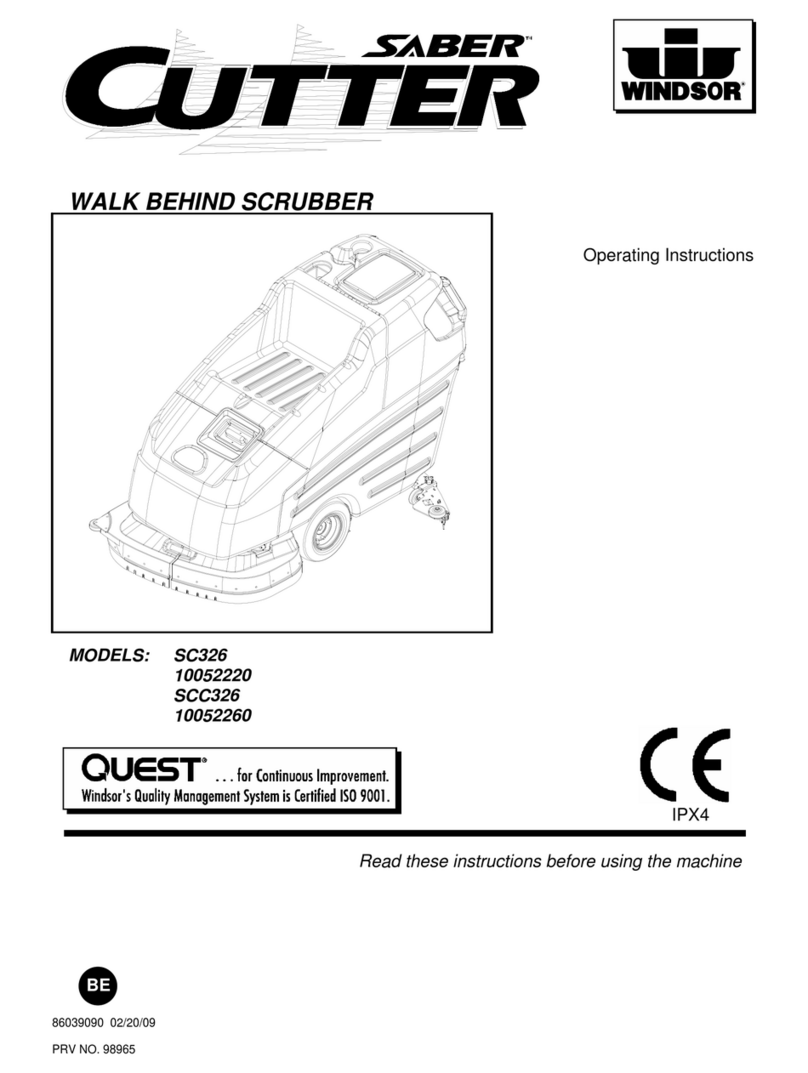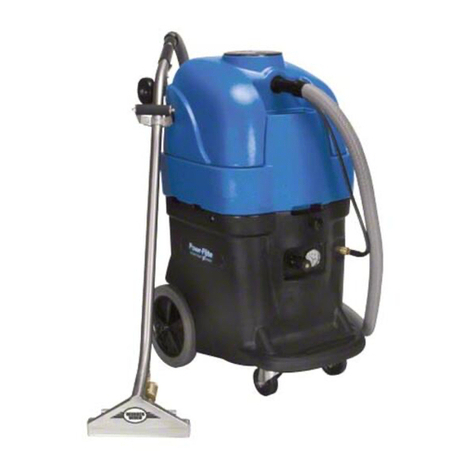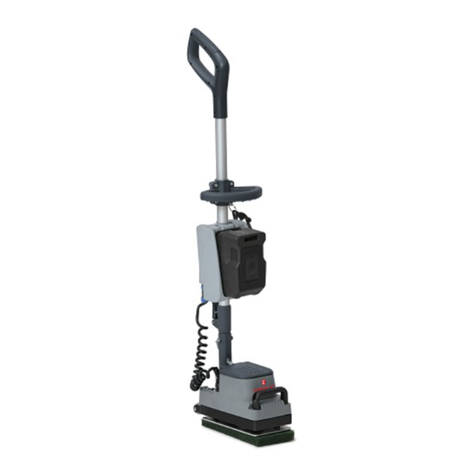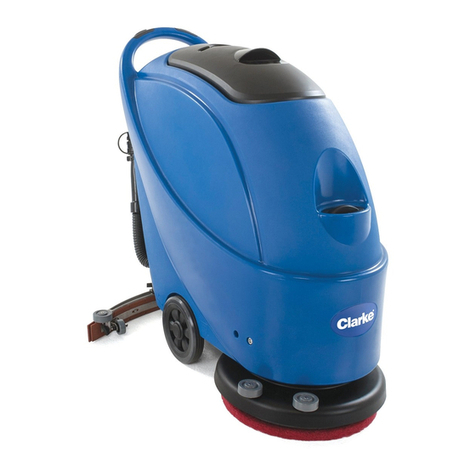
CONTENTS
The following symbols are used to indicate any potentially
hazardous situations. Always read this information
carefully and take the necessary precautions to protect
any people and/or objects that may be present.
Operator cooperation is paramount for accident
prevention. No accident prevention programme can be
eective without the full cooperation of the person directly
responsible for operating the machine. The majority of
occupational accidents that happen either in the workplace
or whilst moving are caused by failure to respect the most
basic safety rules. An attentive, careful operator is most
eective guarantee against accidents and is fundamental
in order to implement any prevention programme.
GENERAL SAFETY
REGULATIONS
CONTENTS...............................................................................................................3
GENERAL SAFETY REGULATIONS.......................................................................3
REFUELLING .............................................................................................................................. 4
USING THE MACHINE................................................................................................................ 5
DEACTIVATION OF THE MACHINE ........................................................................................... 7
MAINTENANCE........................................................................................................................... 7
TRANSPORT............................................................................................................................... 9
MAIN MACHINE COMPONENTS...........................................................................10
MAIN COMPONENTS OF THE COMMAND DISPLAY.......................................... 11
SYMBOLS USED IN THE MANUAL ......................................................................12
PURPOSE AND CONTENT OF THE MANUAL..................................................... 12
TARGET GROUP....................................................................................................12
STORING THE USE AND MAINTENANCE MANUAL........................................... 12
ON CONSIGNMENT OF THE MACHINE ............................................................... 12
INTRODUCTORY COMMENT ................................................................................12
IDENTIFICATION DATA..........................................................................................12
TECHNICAL DESCRIPTION ..................................................................................12
INTENDED USE......................................................................................................12
SAFETY ..................................................................................................................12
SERIAL NUMBER PLATE ...................................................................................... 12
TECHNICAL DATA ................................................................................................. 13
SYMBOLS USED ON THE MACHINE ...................................................................15
SYMBOLS USED ON THE CONTROL PANEL...................................................... 15
SYMBOLS USED ON THE SERIAL NUMBER PLATE.......................................... 16
COMMAND DISPLAY INDICATOR LIGHT SYMBOLS..........................................16
MACHINE PREPARATION .....................................................................................16
HANDLING THE PACKAGED MACHINE.................................................................................. 16
HOW TO UNPACK THE MACHINE........................................................................................... 16
HOW TO MOVE THE MACHINE............................................................................................... 17
MACHINE SAFETY MEASURES .............................................................................................. 18
TYPE OF FUEL TO BE UTILIZED............................................................................................. 18
REFUELLING ............................................................................................................................ 18
FILLING THE SOLUTION TANK ............................................................................................... 18
DETERGENT SOLUTION (VERSION WITHOUT CDS) ........................................................... 19
FILLING THE DETERGENT CANISTER (VERSIONS WITH CDS) .......................................... 19
PREPARING TO WORK ......................................................................................... 19
WORK .....................................................................................................................19
WORKING PROGRAM: TRANSFER ........................................................................................ 20
WORKING PROGRAM: DRYING.............................................................................................. 21
WORKING PROGRAM: SCRUBBING WITH DRYING ............................................................. 22
WORKING PROGRAM: SCRUBBING WITHOUT DRYING...................................................... 23
HOUR METER........................................................................................................................... 24
GENERATOR CHARGE LEVEL SIGNALLING DEVICE........................................................... 24
SELECTING THE OPERATING DIRECTION............................................................................ 24
ADJUSTING THE OPERATING SPEED ................................................................................... 25
TEMPORARY ADJUSTMENT OF BRUSH PRESSURE ........................................................... 25
TEMPORARILY ADJUSTING THE DETERGENT SOLUTION DISPENSED............................ 25
CHECK SCREEN ...................................................................................................................... 25
CHANGING WORKING PROGRAM PARAMETERS................................................................ 26
DIPPED HEADLIGHTS.............................................................................................................. 26
EMERGENCY BUTTON ............................................................................................................ 26
BUZZER..................................................................................................................................... 26
RECOVERY TANK FLOAT ........................................................................................................ 26
SOLUTION TANK FLOAT.......................................................................................................... 26
ADJUSTMENT OF DRIVING POSITION................................................................................... 27
SERVICE BRAKE – PARKING BRAKE..................................................................................... 27
AT THE END OF THE WORK.................................................................................27
RECOMMENDED MAINTENANCE OPERATIONS ...............................................28
DRAINING THE RECOVERY TANK.......................................................................................... 28
EMPTYING THE DEBRIS HOPPER ......................................................................................... 28
CLEANING THE SQUEEGEE BODY ........................................................................................ 29
CLEANING THE DEBRIS HOPPER.......................................................................................... 29
CLEANING THE DISC BRUSHES ............................................................................................ 30
CLEANING CYLINDRICAL BRUSH .......................................................................................... 30
CLEANING THE RECOVERY TANK FILTER............................................................................ 31
CLEANING THE VACUUM MOTOR FILTER............................................................................. 31
EMPTYING THE SOLUTION TANK .......................................................................................... 31
CLEANING THE RECOVERY TANK ......................................................................................... 31
CLEANING THE SOLUTION TANK........................................................................................... 32
CLEANING THE DETERGENT SOLUTION FILTER................................................................. 32
CLEANING THE SQUEEGEE BODY VACUUM TUBE ............................................................. 32
CLEANING THE SCRUBBING BRUSH HEAD SPLASH GUARD ............................................ 33
CLEANING SQUEEGEE SPLASH GUARD BARS RUBBER ................................................... 33
CLEANING THE DETERGENT TANK (VERSIONS WITH CDS) .............................................. 33
CLEANING THE WATER SYSTEM........................................................................................... 33
CLEANING THE WATER SYSTEM (VERSIONS WITH CDS) .................................................. 34
EXTRAORDINARY MAINTENANCE WORK ......................................................... 35
ASSEMBLING THE SQUEEGEE BODY ................................................................................... 35
FITTING DISC BRUSHES ......................................................................................................... 35
FITTING THE CYLINDRICAL BRUSH ...................................................................................... 35
FITTING THE ROLL BAR .......................................................................................................... 36
REPLACING THE DISC BRUSHES .......................................................................................... 36
REPLACING THE CYLINDRICAL BRUSH................................................................................ 37
REPLACING THE SQUEEGEE BODY RUBBER BLADES ...................................................... 37
REPLACING THE SQUEEGEE SPLASH GUARD BARS RUBBER......................................... 38
REPLACING THE SCRUBBING BRUSH HEAD SPLASH GUARD RUBBER.......................... 38
ADJUSTMENT INTERVENTIONS..........................................................................39
ADJUSTING THE SCRUBBING BRUSH HEAD SPLASH GUARD RUBBER .......................... 39
ADJUSTING THE SQUEEGEE SPLASH GUARD BAR RUBBER............................................ 39
ADJUSTING THE SQUEEGEE BODY RUBBER BLADES....................................................... 40
DISPOSAL ..............................................................................................................40
CHOOSING AND USING THE BRUSHES............................................................. 40
EC DECLARATION OF CONFORMITY.................................................................. 40
TROUBLESHOOTING............................................................................................41
BROWSING THE COMMAND DISPLAY MENU .................................................... 42
CONTROLLER SET .................................................................................................................. 42
ALARM....................................................................................................................................... 43
PROGRAM SET ........................................................................................................................ 43
HOUR METERS ........................................................................................................................ 43
3





























